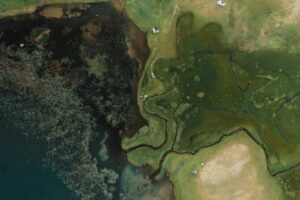Soils emit gamma radiation that can be measured with gamma spectrometry. Spectral features are correlated with soil mineralogy and texture. Measuring the spectral features proximally and in real-time on heterogeneous agricultural fields is a crucial option for precision agriculture. Fine-scale spatial information on soil properties is necessary to implement precision agriculture successfully. Gamma Ray Spectroscopy applications in soil mapping have emerged as a promising tool for collecting fine-scale soil information.
When farmers are aware of the characteristics of the spatial variability in the soil properties, it eliminates the risk of crop failure and improves the efficiency of decision-making. This is beneficial both economically and environmentally. There is no denying that the collection of fine-scale information on soil properties with conventional soil mapping and laboratory analysis is highly time-consuming and expensive as well. Utilizing gamma ray spectroscopy is a more efficient method for soil monitoring, modeling, and precision agriculture.

Source: Freepik
Proximal Soil Sensors in Precision Agriculture:
Proximal soil sensors in precision agriculture can offer soil information with high spatial resolutions that explain, in detail, the variations in soil properties. The soil sensing methods are subject to less interfering factors like clouds and vegetation cover. Proximal soil sensors are more robust than the aerial and satellite remote sensing methods. Therefore, using the proximal sensors, it is possible to establish less ambiguous relations between the sensor output and soil properties.
Gamma-ray spectroscopy applications in soil mapping are also known as radiometrics. It is a ground-based proximal soil sensing method that can offer information on soil properties at high spatial resolution. Proximal gamma-ray spectrometers have become popular in the last decade to map soil properties using spectral energy windows of radionuclides.
How do Soils Emit Gamma Radiation? Explaining the Concept of Radionuclides:
Gamma rays are photons of high energy and short-wavelength electromagnetic radiation that are emitted from naturally occurring isotopes. The radioactive isotopes of elements that emit gamma radiation are known as radionuclides. Most of the radionuclides occur naturally, but only potassium, uranium, and thorium create gamma rays of sufficient energy and intensity to be measured with gamma-ray spectroscopy.
The radionuclides are present in soils and rocks in the form of isotopes in different amounts. Other man-made radionuclides include a radioisotope of caesium which has been deposited on the soils because of the nuclear tests, warfare, or accidents like Chernobyl for example. Radiation that doesn’t originate from the earth’s surface is regarded as background deposition. The primary source of background radiation is atmospheric radon. There are quite a number of factors that attenuate gamma-ray emission. In soils, the water content and bulk density are the primary factors that attenuate gamma-ray emission.
Mobile gamma spectrometry is evolving. Scientists have made increasing efforts to evaluate all the possibilities regarding gamma spectrometry and overcome the limitations for practical applications. Proximally recorded gamma spectra offer information on soil properties that are relevant for different applications in agricultural soil use and research.
Determining the accurate amount of radionuclides:
Did you know? 90% of the above ground gamma radiation originates from 0.3m of soils – which is the main root zone for the agricultural crops. There are relationships between the different features of the gamma spectrum, sand, silt, and clay contents. The accurate amount of radionuclides in a specific area of soil is determined by the site-specific conditions like geological, mineralogical, and pedological settings and processes.
Remote gamma spectroscopy, as well as proximal gamma spectroscopy, can detect the spatial soil texture patterns at different scales.
Mobile gamma measurements can be conducted while driving over the field or even during stationary recordings. Both approaches yield similar results. Gamma ray spectroscopy applications in soil mapping empowers us to know in details about the composition, features, and specificity of an agricultural plot. To get the best soil mapping analysis, contact SoilOptix® today! Visit https://soiloptix.com/ for details.
